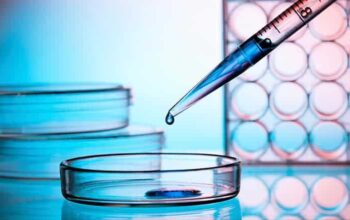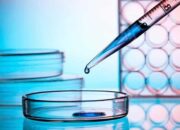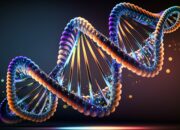The intricacies of DNA detection have long posed a labyrinthine challenge for biophysicists, a quagmire intertwined with the very essence of life itself. However, recent advancements have ushered in a new epoch, transforming the cumbersome protocols of genetic analysis into a symphony of efficiency. This transformation is not merely an incremental modification; it represents a fundamental shift in how researchers engage with the molecular undercurrents of biology.
At the heart of this revolutionary breakthrough lays the concept of synthetic DNA catch bonds. These engineered entities act as molecular velcro, allowing for a robust, stable interaction with target DNA sequences while significantly enhancing detection sensitivity. The metaphor of velcro encapsulates the essence of this mechanism: it adheres selectively and tenaciously, enabling researchers to ‘catch’ elusive strands of DNA with far greater efficacy than traditional methods.
This biophysical innovation operates on principles that traverse the realms of molecular biology and biophysics. Traditional DNA detection methods often require meticulous preparation, including amplification processes such as polymerase chain reaction (PCR), which, while powerful, are laden with potential pitfalls ranging from contamination to false positives. Synthetic DNA catch bonds offer a novel escape from these labyrinthine protocols. By effectively reducing the reliance on amplification, this method simplifies the workflow, rendering it more accessible to a broader spectrum of laboratories worldwide.
The significance of this detection method extends beyond simplicity and efficiency; it touches upon the biochemical aesthetics and elegance inherent in nature’s design. Synthetic catch bonds exploit sequence specificity, ensuring that only the intended target is detected. This aspect can be likened to a key fitting precisely into its lock—each bond meticulously crafted to respond solely to specific sequences of genetic material. Such selectivity minimizes background noise, a bane of many traditional methods, and enhances the reliability of the results obtained.
Furthermore, the stability of synthetic DNA catch bonds under various environmental conditions marks a milestone in biophysical research. Classic detection techniques often falter under the pressures of temperature fluctuations and varying ionic strengths. In contrast, these synthetic bonds exhibit remarkable robustness, enabling them to function optimally across a spectrum of experimental settings. Therefore, they present a viable solution for field applications, where environmental variables can be unpredictable.
Moreover, the implications of simplifying DNA detection methods resonate deeply within clinical and environmental contexts. In clinical diagnostics, rapid and accurate detection of pathogens is paramount. The ability to streamline this process not only accelerates diagnosis but also enhances the scope of point-of-care testing. As a result, consumers can receive treatment more quickly, potentially curtailing the spread of infectious diseases.
Environmental monitoring similarly stands to benefit from these advancements. The detection of genetic markers associated with pollution or invasive species has become a crucial aspect of ecological conservation efforts. The synthetic DNA catch bond methodology, with its enhanced sensitivity and specificity, can facilitate more precise assessments of biodiversity and ecosystem health. The consequences of these implementations extend far beyond data collection; they translate into informed decision-making for conservation practices that are desperately needed in our rapidly changing world.
The biophysical principles employed in synthetic DNA catch bond detection also open avenues for interdisciplinary collaboration. The intersection of molecular biology, materials science, and biomedical engineering encourages collective problem-solving. As researchers from disparate fields converge, the dialogue can foster innovative applications beyond DNA detection, potentially leading to breakthroughs in drug delivery systems, biosensors, and beyond. This interconnectedness resonates with the prevalent notion that true innovation arises at the confluence of various scientific disciplines.
However, as with any scientific advancement, ethical considerations loom large. The increased capability to detect and manipulate DNA raises questions surrounding privacy, consent, and the potential for misuse of genetic information. As this technology matures, it will be imperative for the scientific community to engage in critical discussions surrounding these issues, ensuring that the advancements serve the broader societal good. Policymakers, ethicists, and scientists must collaborate to construct frameworks that safeguard individual rights while fostering innovation.
In summation, the strides made in synthetic DNA catch bond technology herald a transformative era in the field of molecular detection. By simplifying the complexities that have long plagued DNA analysis, this innovation embodies a profound understanding of both the scientific landscape and the ethical implications of wielding such power. The symbiotic relationship between simplicity and sophistication encapsulated in these novel detection methods will inevitably redefine our interaction with genetic material, offering unprecedented opportunities for advancement in both clinical and ecological realms.
As researchers continue to navigate the uncharted waters of molecular biology, one can only anticipate the wealth of discoveries that lie ahead. The adventure of exploration beckons, and with tools such as synthetic DNA catch bonds at their disposal, scientists stand poised to unveil the myriad secrets that DNA still holds.










